#neo-Assyrian
Text


~ Plaque of conjuration against the Lamashtu, called "plaque of the underworld" or Hell Plate.
Period: Neo-Assyrian (1st half of the millennium)
Place of origin: Assyria
Medium: Bronze
#ancient#ancient art#history#museum#archeology#ancient sculpture#ancient history#archaeology#assyria#assyrian#plaque#Lamashtu#conjuring#underworld#hell plate#Neo-Assyrian#bronze
2K notes
·
View notes
Text
“You shit bucket of a farter!” (SAA 3 30)
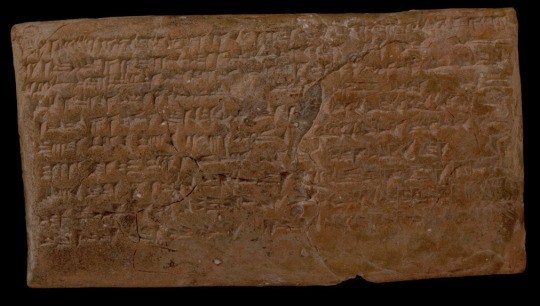
This ancient Neo-Assyrian "diss track," framed as a magical incantation, offers a series of slurs (some misogynistic and homophobic) against a Mr. Bel-eţir. It seems to conclude with an aggressive invitation: “fight me!”
There are multiple Bel-eṭirs in the historical record, but this is probably the same son of Ibâ who had a satire of a birth-legend written about him.
Although the tablet is well-preserved, many of the phrases are obscure; I have used italics to indicate where I am less certain of my translation.
...
Incantation:
Mr. Bel-eṭir, you twofold prison fucktoy, twofold soggy, twofold staring, son of Ibâ, absent epoch, shit bucket of a farter, second-rate clan, slave of a dead god, house whose star has vanished from the sky, maidservant, woman, slave of Lady Balihitu, beard among fucked-out women, "Mr. Baby-boy," much-maligned man.
Mr. Ammanappu provided your whitewash, saying: "First of all, his house is in shadow, starting at the top." He swore by the Lord, "I will not let go until I have fucked him!"
Let go of what Mr. Ammanappu has! Don't chase after what Mr. Tamru has! Stay away from Mr. Ammanipite! Keep your crotch away from Mr. Haimbi!
Now I have spoken to you. On account of this, rise up against me!
4K notes
·
View notes
Text

Dog figurines, Neo-Assyrian, 645BC,
“Expeller of evil” (mušēṣu lemnūti) with white pigment and red spots
“Catcher of the enemy” (kāšid ayyāb) with red pigment
“Don’t think, bite!” (ē tamtallik epuš pāka) with white pigment
“Biter of his foe!” (munaššiku gārîšu) with turquoise pigment
“Loud is his bark!” (dan rigiššu) with black pigment
Fired clay dog figurine: originally covered with white pigment and inscribed on the left side in cuneiform.
Painted Fired Clay,
Height: Height: 5 centimetres, Length: Length: 6.80 centimetres, Width: Width: 2.60 centimetres.
Courtesy: The British Museum
#art#history#design#style#archeology#sculpture#antiquity#figure#dog#neo-assyrian#fired clay#paint#the bristish museum#pigment#cuneiform
8 notes
·
View notes
Text
Drawing Cuneiform, Part 2/3
(Previous)
For the most part, ancient scribes didn't really draw cuneiform. They wrote it by pressing the stylus into the clay. That's what the system was designed for, after all!
But occasionally that wasn't possible. For example, what if you wrote out a whole tablet, but it dried before you could sign your name on it? Well, you might have to find a sharp implement and just scratch it into the clay, like with this Hittite tablet (known as Bo 2400 for this fragment or KBo 3.9 for the whole thing).
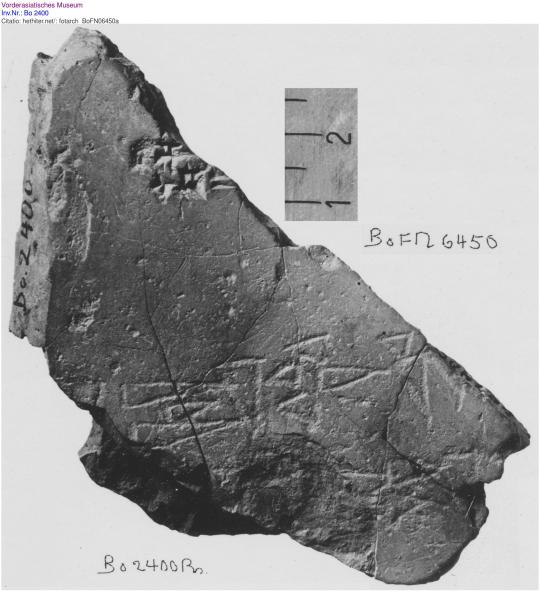
Here's a zoomed and enhanced version:
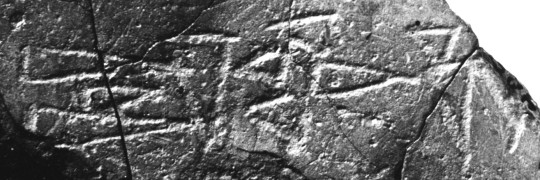
(The original publication of this tablet claimed the scribe's name was written in ink with a reed pen, but from the photos, it very much seems to be inscribed. These three signs say -ma-wa-za- or -ku-wa-za-, but I don't know if that corresponds with the full name of any scribe we know about.)
This style seems straightforward enough. Just draw the outline of the triangles! And this is how some modern cuneiform fonts do it, so that seems like another good option.

Here's how that Gilgamesh excerpt from last time would look in this style.

Hmm…less busy, but also it's hard to tell where exactly the strokes meet when their points are so thin.
But this unfortunate Hittite scribe isn't the only one who needed to draw out cuneiform on a flat surface. Here's a wall tile from the British Museum, from the reign of the Neo-Assyrian ruler Tukulti-Ninurta II.
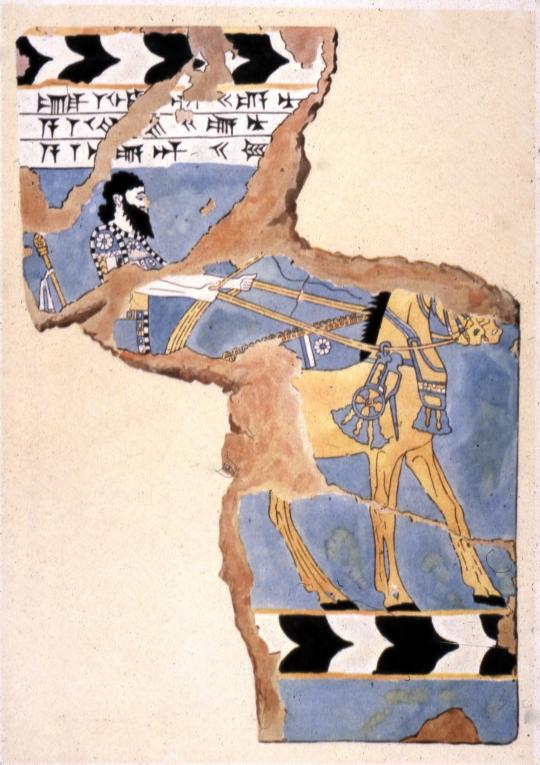
And zoomed in a bit:

(Images from the British Museum, CC-BY-NC-SA.)
This looks pretty close to our autograph style from before, just with the heads filled in! Let's try this.

Pretty! But the stroke heads still stand out quite a lot. That seems to be the biggest problem we're facing in trying to make the 2D cuneiform drawings look good: it's very important to show where the stroke heads are, but it always takes so much ink and makes the whole thing look more complicated than it should.
Another option uses a flat triangle for the head, like—ALLEGEDLY—on this stone tablet from the Sumerian king Il of Umma.
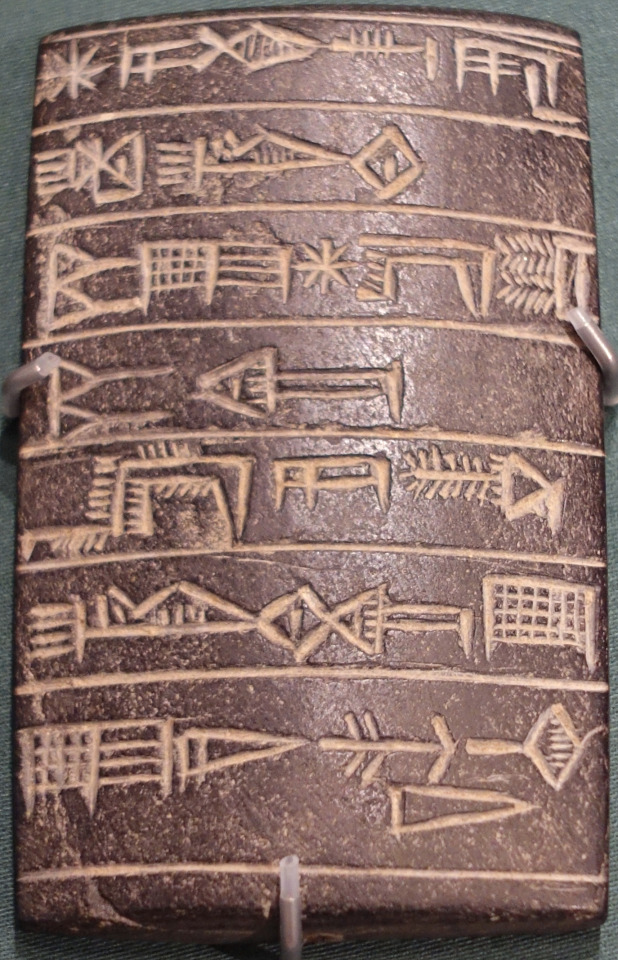
See those big strokes on the left with the triangular heads? Those are often used as an example of the "triangle-head" style…but something's wrong here. Why don't any of the other strokes have heads like that?
Well, it's because those aren't actually the stroke heads! That's the sign DUMU, meaning "son", and this is how it looks on clay (around this era, from Labat's Manuel d'Epigraphie Akkadienne):

So those aren't the stroke heads, those are just extra strokes!
I implemented the triangle head style anyway, though, for a much less lofty reason. While I was working on this project, a Magic the Gathering card came out with fantasy cuneiform on it:
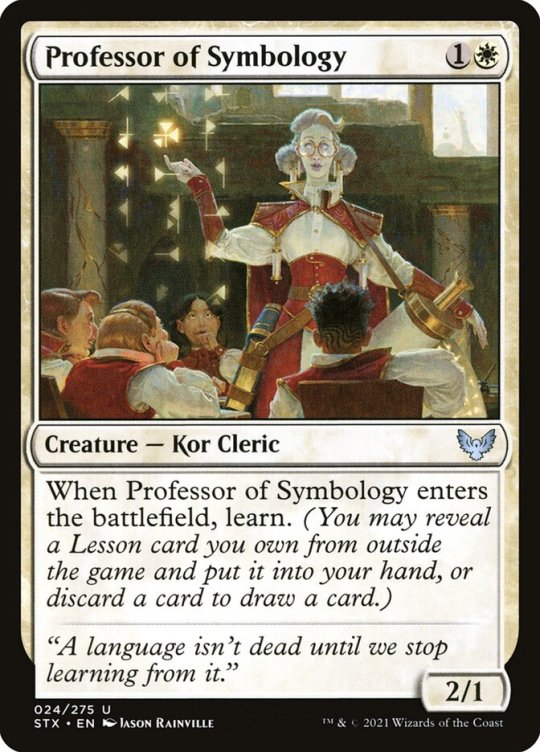
And I wanted to make a version of this card in Hittite as a joke, imitating the style that these glyphs are drawn in. So here's how the Gilgamesh text would look in the "triangle head" renderer.

It has a certain aesthetic appeal, but it's a bit too blocky for my liking. (There's also a version that fills in the triangles, but that's even blockier.)
But there's one other form of ancient "drawn" cuneiform that I was introduced to a couple months ago, that I think will solve all these problems.
(Next)
5 notes
·
View notes
Text

Lion's head
9,4 cm x 10,6 cm
Material: Limestone
Culture/Time Period: Neo-Assyrian
Production Date: ca. 882 BC
Findspot: Shamash Temple (Iraq)
Source: British Museum
#history#archaeology#Mesopotamia#Neo-Assyrian#historical object#ancient history#ancient civilizations#artifact#ancient cultures#sculpture#ancient civilization
4 notes
·
View notes
Text
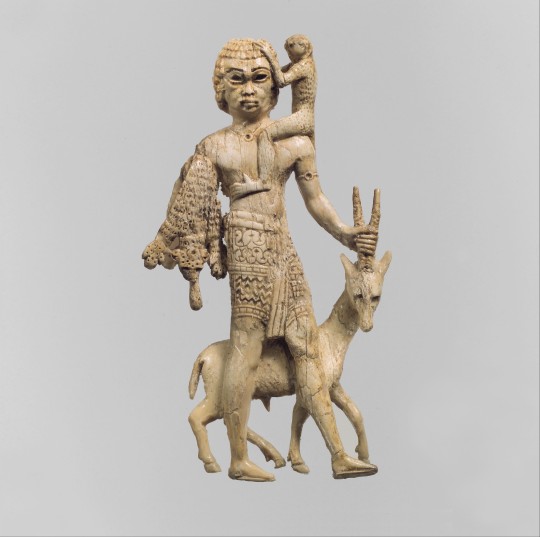
Assyrian ivory statuette group, found with other statuettes in a room at Fort Shalmaneser, Nimrud (30 km south of Mosul in present-day Iraq). A man with a leopard-skin on his right shoulder grasps the horns of an oryx, while a monkey sits on his other shoulder. Artist unknown; ca. 8th cent. BCE. Now in the Metropolitan Museum of Art.
#art#art history#ancient art#Near East#Ancient Near East#Near Eastern art#Ancient Near Eastern art#Mesopotamia#Ancient Mesopotamia#Mesopotamian art#Ancient Mesopotamian art#Assyria#Assyrian art#Neo-Assyrian#sculpture#statuette#ivory#carving#animals in art#Metropolitan Museum of Art
210 notes
·
View notes
Photo

Ivory plaque in “North Syrian” style
ca. 800-700 BCE
Found at Nimrud, ancient Kalhu (Iraq)
Penn Museum, 61-3-2
126 notes
·
View notes
Text
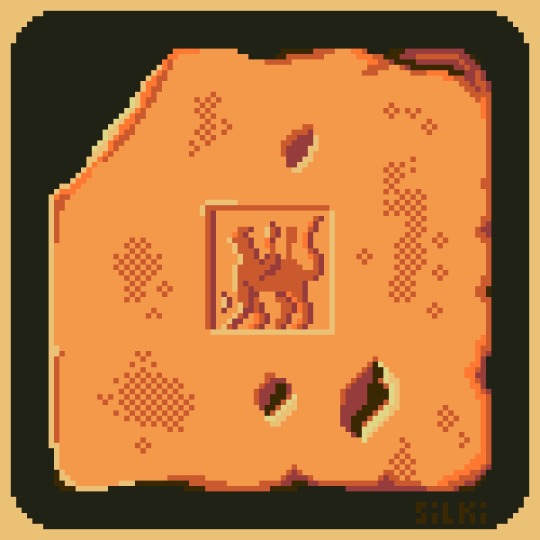
Only 4 days late for the Pixel Dailies’ baked' theme. A stamped and baked clay brick. The stamp shows the 'mushhushshu' dragon with the emblems of Marduk and Nabu on its back. Found in Nimrud, in Iraq. Dated to 630-627 BCE. Currently held in the British Museum, but not on display. First theme I’ve been inspired to do in a decent while.
[img ID: Pixel art of a worn, square, clay brick with a broken corner, coloured in shades of yellow, orange, and brown. In the middle of the the brick is a square showing a four-legged creature with a long tail, carrying two indistinct emblems on its back. /ID]
4 notes
·
View notes
Text
The Neo-Assyrian Birth Legend
The Neo-Assyrian Birth Legend expanded on the literature about Sargon of Akkad’s humble origins, drawing from biographical traditions as well as folklore themes including the infant exposure motif. In this ‘pseudo-autobiographical’ text, likely composed during the reign of Sargon II (722-706 BCE), Sargon described his early life as foundling raised by a gardener, who became a gardener himself,…

View On WordPress
0 notes
Text
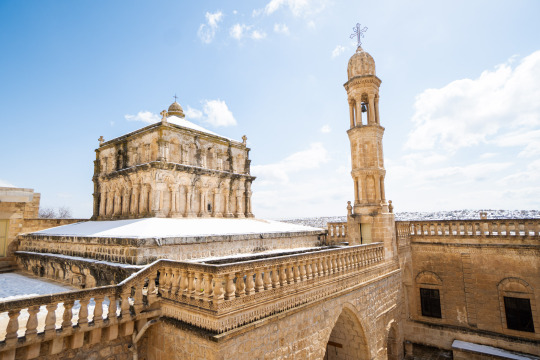
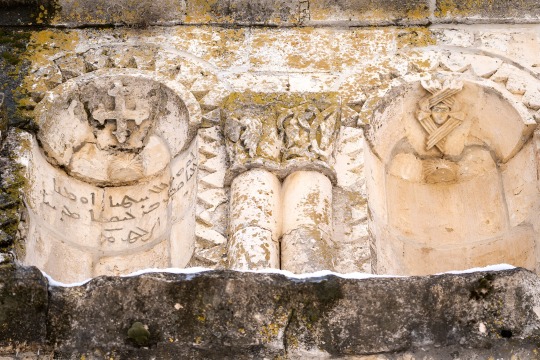

the church of yoldath aloho (the mother of god) in hah in the historical tur 'abin region, located within modern-day turkey. it's thought to have been built around 450 ad and expanded by byzantine emperor justinian in the 6th century, with several additions made throughout the years. the square-shaped dome on the top is unique to the region.
according to local tradition, it was built on a site where twelve kings, following a star to bethlehem, were inspired to do so after witnessing a miracle which proved to them mary's holiness.
#assyrian#architecture#interior#worship#christian#my posts#posting this in celebration of me being able to read the neo aramaic alphabet now
41 notes
·
View notes
Text

Rassam Cylinder, a ten-sided clay cylinder that was created in c. 643 BC, during the reign of King Ashurbanipal (c. 685 BC - 631 BC) who ruled the Neo-Assyrian Empire from 669 - 631 BC.
It was discovered in the ancient Assyrian city of Nineveh, near Mosul, present-day Iraq, by Hormuzd Rassam (3 October 1826 - 16 September 1910) in 1854.
In over 1,300 lines of cuneiform text, the cylinder records nine military campaigns of Ashurbanipal, including his wars with Egypt, Elam and his brother, Shamash-shum-ukin.
It also records his accession to the throne and his restoration of the Palace of Sennacherib.
The cylinder is the most complete chronicle on the life of Ashurbanipal.
There are some extracts from the cylinder below:
"I am Ashurbanipal, offspring of Ashur and Bêlit, the oldest prince of the royal harem, whose name Ashur and Sin, the lord of the tiara, have named for the kingship from earliest (lit., distant) days, whom they formed in his mother's womb, for the rulership of Assyria; whom Shamash, Adad and Ishtar, by their unalterable (lit., established) decree, have ordered to exercise sovereignty.
Esarhaddon, king of Assyria, the father who begot me, respected the word of Ashur and Bêlit-ilê (the Lady of the Gods), his tutelary (divinities), when they gave the command that I should exercise sovereignty.
In the month of Airu, in the month of Ea, the lord of mankind, the twelfth day, an auspicious day, the feast day of Gula, at the sublime command which Ashur, Bêlit, Sin, Shamash, Adad, Bêl, Nabû, Ishtar of Nineveh, Queen of Kidmuri, Ishtar of Arbela, Urta, Nergal, Nusku, uttered, he gathered together the people of Assyria, great and small, from the upper to (lit., and) lower sea.
That they would accept (lit., guard) my crown princeship, and later my kingship, he made them take an oath by the great gods, and so he strengthened the bonds (between them and me)....
By the order of the great gods, whose names I called upon, extolling their glory, who commanded that I should exercise sovereignty, assigned me the task of adorning their sanctuaries, assailed my opponents on my behalf, slew my enemies, the valiant hero, beloved of Ashur and Ishtar, scion of royalty, am I.
Egyptian Campaign:
"In my first campaign I marched against Magan, Meluhha, Taharqa, king of Egypt and Ethiopia, whom Esarhaddon, king of Assyria, the father who begot me, had defeated, and whose land he brought under his sway.
This same Taharqa forgot the might of Ashur, Ishtar and the other great gods, my lords, and put his trust upon his own power.
He turned against the kings and regents whom my own father had appointed in Egypt.
He entered and took residence in Memphis, the city which my own father had conquered and incorporated into Assyrian territory.
A swift courier came to Nineveh and reported to me.
At these deeds, my heart became enraged, my soul cried out. I raised my hands in prayer to Ashur and the Assyrian Ishtar.
I mustered my mighty forces, which Ashur and Ishtar had placed into my hands. Against Egypt and Ethiopia, I directed the march."
Rassam Cylinder records the reign of Ashurbanipal until c. 645 BC.
The latter years of his reign are poorly recorded, probably due to the fact that the Neo-Assyrian Empire was plagued with troubles.
One of Ashurbanipal's last known inscription reads:
"I cannot do away with the strife in my country and the dissensions in my family; disturbing scandals oppress me always.
Illness of mind and flesh bow me down; with cries of woe I bring my days to an end.
On the day of the city god, the day of the festival, I am wretched; death is seizing hold upon me, and bears me down..."
Rassam Cylinder is currently on display in the British Museum.
A truly remarkable, yet biased, insight into the reign of Ashurbanipal and the world in which he lived.
📷: © Anthony Huan
#Rassam Cylinder#King Ashurbanipal#Neo-Assyrian Empire#Nineveh#Hormuzd Rassam#clay cylinder#cuneiform text#Palace of Sennacherib#British Museum#Assyria#ancient civilizations#Iraq#assyriology#military campaigns#cuneiform cylinder#cuneiform#writing systems
38 notes
·
View notes
Text

~ Furniture plaque carved in relief with lion-headed figure.
Period: Neo-Assyrian
Date: ca. 8th–7th century BC.
Place of origin: Mesopotamia, Nimrud (ancient Kalhu)
Culture: Assyrian
Medium: Ivory
#ancient#ancient art#history#museum#archeology#ancient sculpture#ancient history#archaeology#mesopotamia#Assyria#neo Assyria#assyrian#nimrud#kalhu#lion#plaque#furniture plaque#ca. 8th century B.C.#ca. 7th century B.C.
921 notes
·
View notes
Photo

The Neo-Assyrian Empire, at its greatest territorial extent in 671 BC
by u/Pluto_and_Charon
116 notes
·
View notes
Text
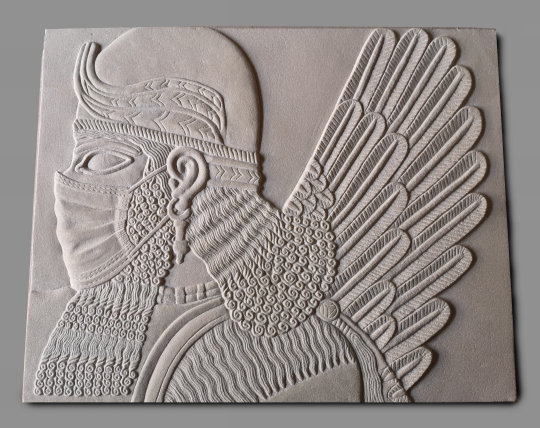
Masked Assyrian Winged Genie.
Hand carved in sandstone, now in possession of the British Museum.
Can be viewed here: https://www.britishmuseum.org/collection/object/W_2020-6011-1
#carving#stone carving#sculpture#art#traditional art#ancient history#ancient art#archaeology#antiquities#ancient civilizations#assyria#neo assyrian#ancient assyria#mesopotamia#mesopotamian art#mesopotamian#british museum#museum#the british museum#hand crafted
50 notes
·
View notes
Text
Drawing Cuneiform, Part 3/3
(Previous)
So, how can we draw these signs in a way that's clear and legible, without getting too overcrowded and busy?
We have to make it clear where strokes start and end, because these three are all different signs (the sounds qa, me, and bar). This means we can't only mark the heads.

And we have to be able to mark multiple heads on a single stroke, because these two are different signs (the number 2, and the sound a). This means we can't only mark the tails.
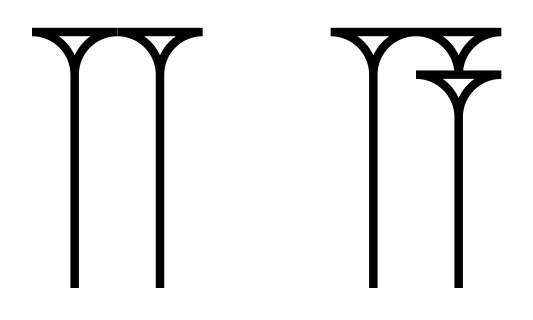
So how can we achieve both of those goals, without ending up with a mess of heads and tails everywhere?
Well, it turns out some ancient scribes tried to solve the same problem!
Ashurbanipal, the last of the "great" kings of the Assyrian Empire, was known for being a horrifically cruel and bloodthirsty ruler (which is part of why he was the last of them). But he was also a great scholar, and he devoted a lot of his time and effort to building the Royal Library, which was meant to include all the knowledge of the world. It's thanks to this Royal Library that we have as much ancient Mesopotamian literature as we do today!
Like any good librarian, he made sure that every tablet filed in the Royal Library was properly labelled, and like any good emperor, he made sure they all had his own name on them, just in case. Usually this was stamped into the clay the normal way. But sometimes the tablets brought back from sacking a city had already been fired. What then?
Well, in exactly three specific cases, we've found this library information (the "colophon") written on in ink.
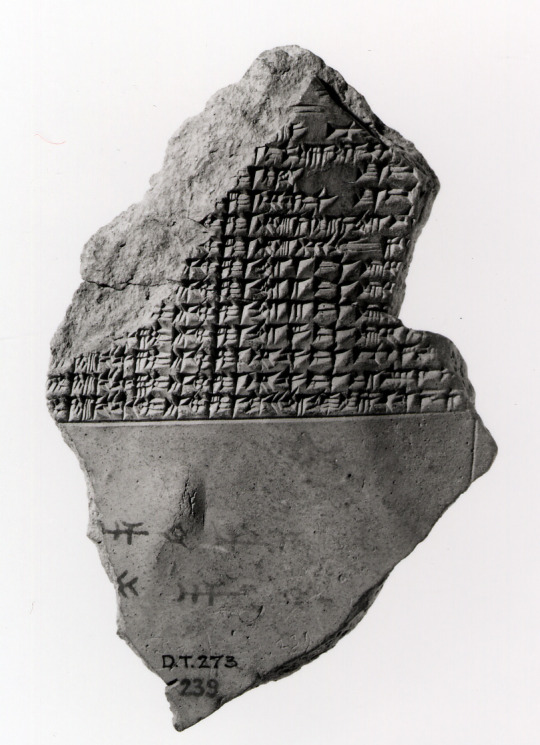
Here are zoomed-in images of the two I was able to find in the British Museum's collection. The third should be somewhere in there as well, but I haven't been able to locate it.

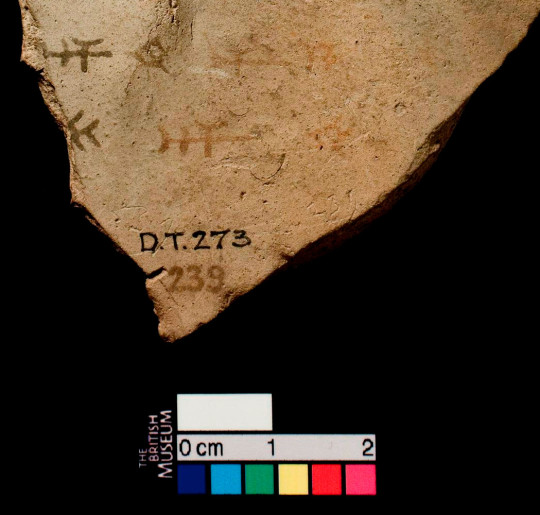
The text is pretty badly faded, but we know what it says based on other tablets from the Library: "Palace of Ashurbanipal, King of the World, King of Assyria".
Now this looks promising! This isn't just the improvised work of a scribe whose tablet dried too fast—according to Irving Finkel, the British Museum's cuneiform expert, the neatness and elegance of the writing suggests that there was a long tradition of this. Ink is just less durable than fired ceramic, and less likely to survive for the thousands of years it took us to rediscover these artifacts.
It's hard to extrapolate much from just these two inscriptions, but we can say a few things:
The heads are drawn with curved lines, and the tails with straight lines
Multiple tails can share one head, and multiple heads can share one tail
So let's see if we can render some text in this style! Here's what the full colophon should look like, if the rest of the text had survived:

I had to make a few guesses to make this work. We don't have any "Winkelhaken" strokes in the surviving text—the ones that look like big hooks, without a head or tail—so I just guessed at how they would be drawn.
But still, I think we've found our winner. This is the most readable style I've seen yet for writing cuneiform in two dimensions. You can see clearly where all the heads and tails are, you can tell the heads apart from the tails, and each wedge takes a maximum of two pen strokes to draw, a big improvement over our earlier versions!
So to finish off, here's how our Gilgamesh excerpt would look in this style:

Very readable, I think!
Next up: how exactly does this style work?
5 notes
·
View notes
Text

Relief of Ashurbanipal (668–627 BC) spearing a lion, the imperial beast, Neo-Assyrian period (circa 645–635 BC). North Palace, Nineveh (modern-day Mosul, Iraq).
From "The Encyclopedia of Ancient Civilizations" published in 1980.
22 notes
·
View notes